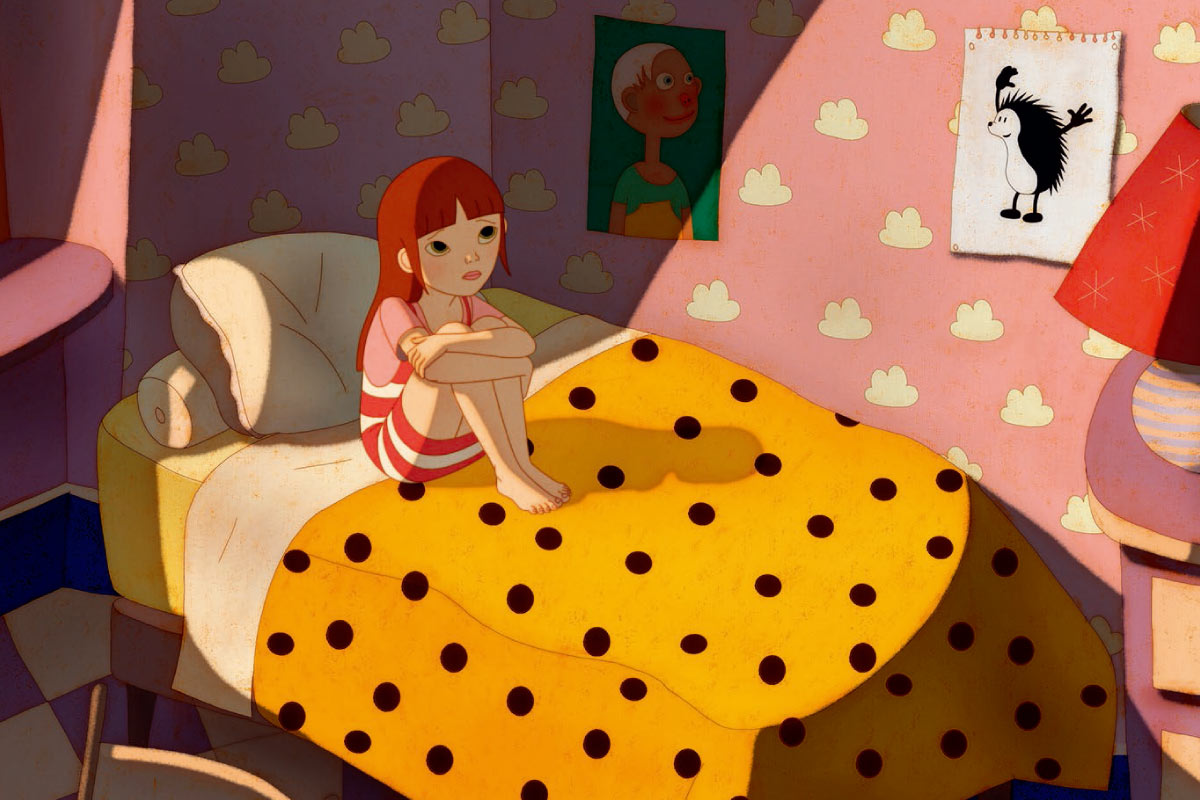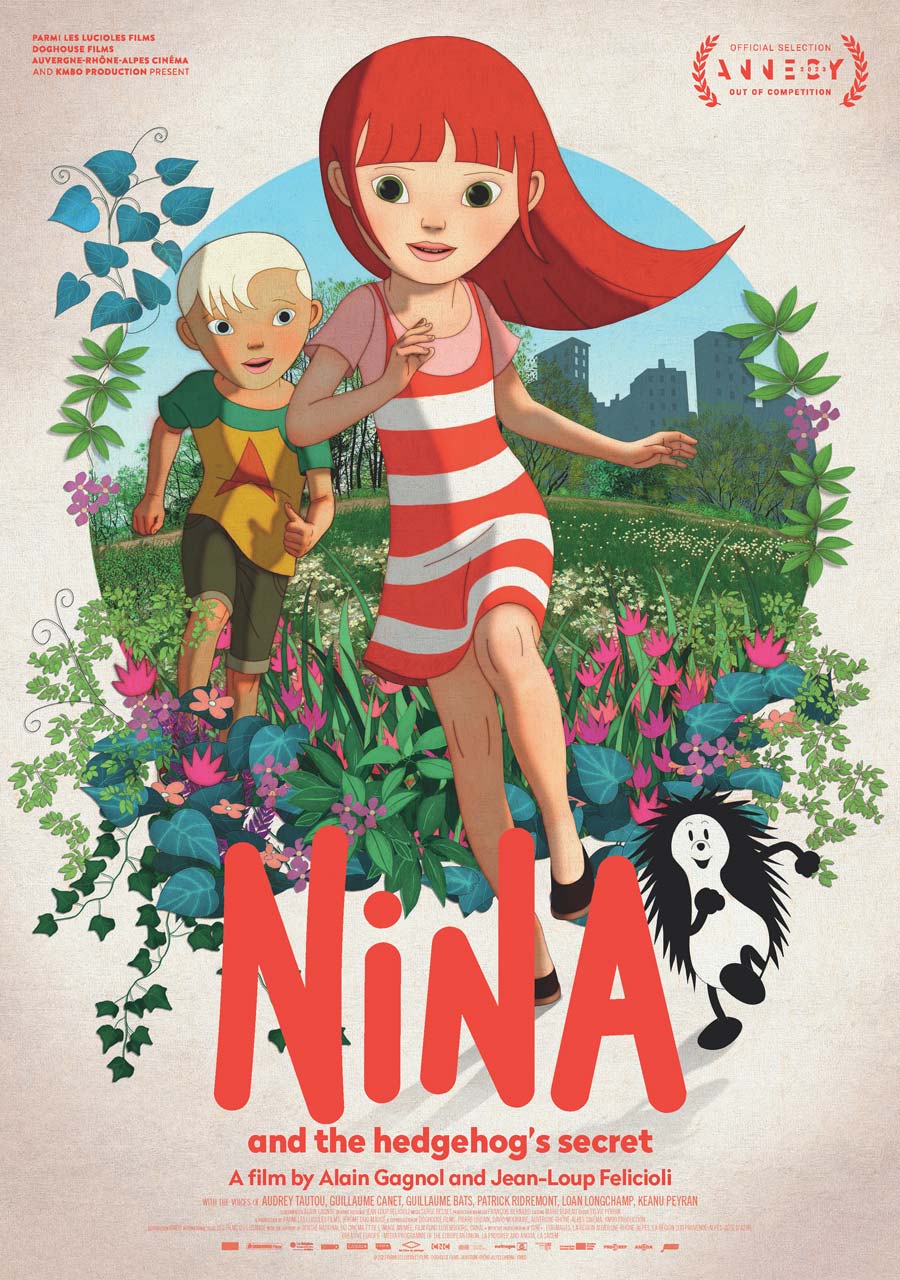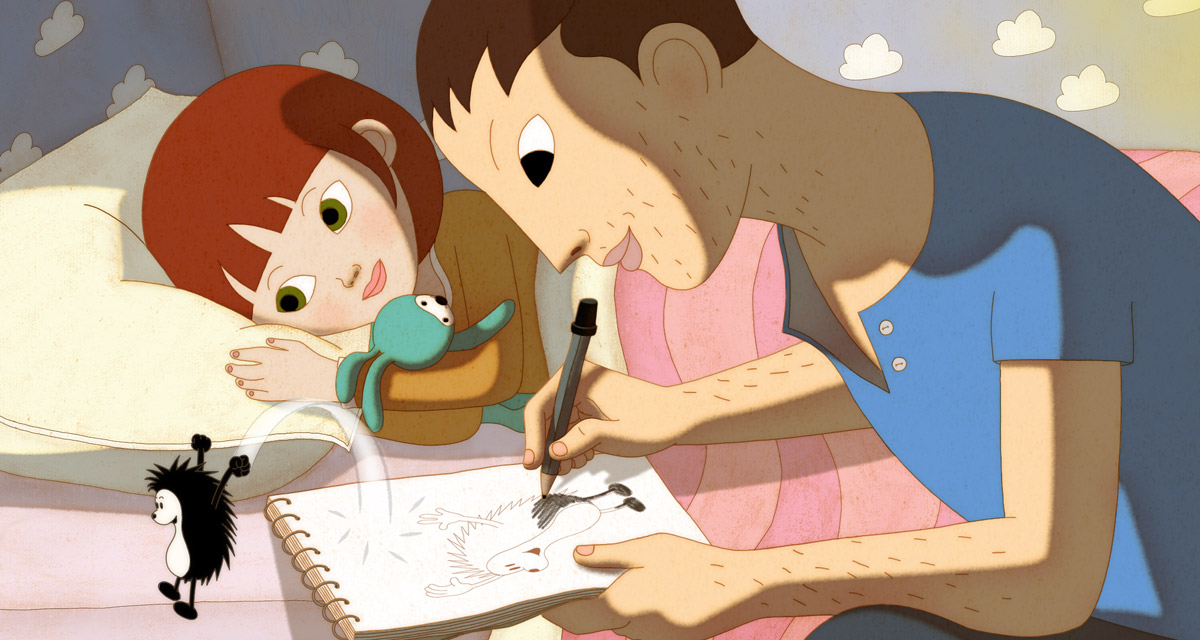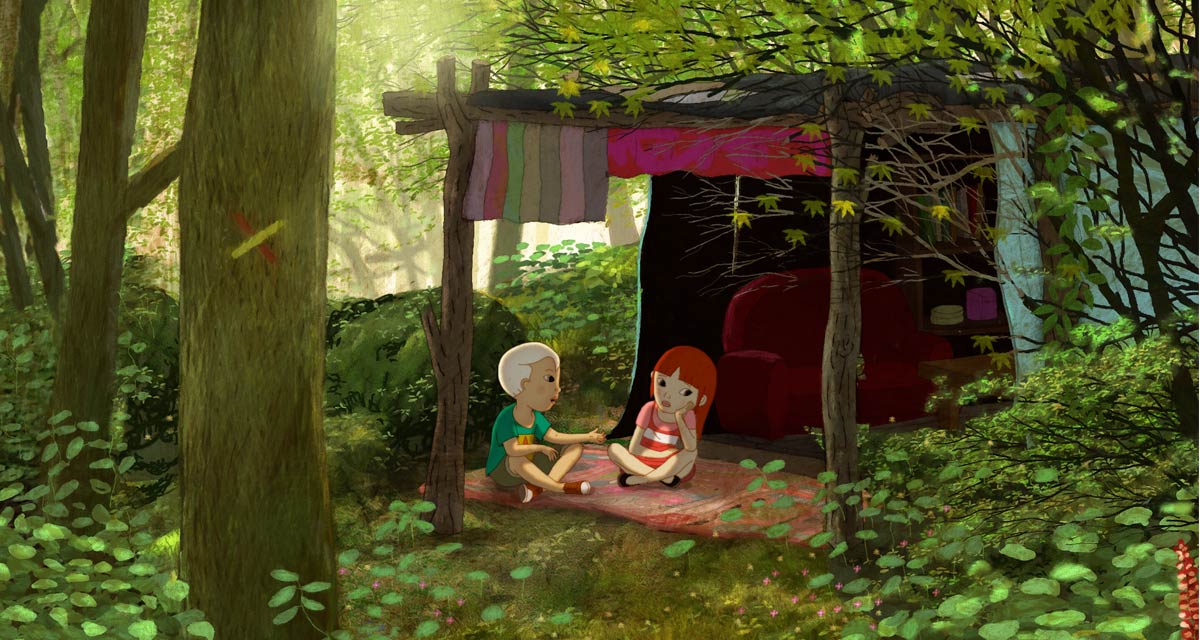Synopsis
10-year-old Nina has always filled her imagination with her dad’s hedgehog diverting stories. But when he loses his job, Nina starts to worry about the future of her family. After hearing rumors of a treasure hidden by the old factory’s boss, Nina and her best friend Mehdi decide to organize a risky hold-up, to share the swag between her father and his fellow co-workers. A crazy adventure begins…
Film credits
Directors: Alain Gagnol and Jean-Loup Felicioli
Scriptwriters: Alain Gagnol and Jean-Loup Felicioli
Producers: Jérôme Duc-Maugé (Parmi Les Lucioles Films, France), Pierre Urbain (Doghouse Films, Luxembourg), David Mouraire (Doghouse Films, Luxembourg)
Music: Serge Besset
Target audience: Children
Technique: 2D digital
Running time: 78 minutes
The great visual storyteller duo Alain Gagnol and Jean-Loup Felicioli, who are especially famous for their Oscar-nominated film A Cat in Paris (2010), have returned to the Annecy International Animation Film Festival 2023 with a new animated feature film, Nina and The Hedgehog’s Secret. As with their two previous feature films A Cat in Paris and Phantom Boy, the film tells a thrilling but also heart-warming adventure story centering on child protagonists. All the characters, including animals, are lively and vividly portrayed, with their personalities carefully and subtly created, where you can’t help but be fascinated by them and love them all.
Nina and The Hedgehog’s Secret tells a story, where we can reconfirm the kindness and warmth of people in everyday life and that anybody can be a hero, in a scenario that seems familiar to everyone: A factory closes down and several fathers in a community lose their job. In fact, many characters in this film will demonstrate that a person can be a hero for another at any moment.
We interviewed Alain Gagnol, one of the co-directors and co-authors, on the story behind Nina and The Hedgehog’s Secret.
Interview with Alain Gagnol
Hideki Nagaishi (HN): Could you please let us know what the initial idea of the film story looked like and where did that story idea come from?
Alain Gagnol: The idea for the story came from the relationship between Nina and her father. I wanted to write a film about how a child (originally a boy) saves his father by giving him courage.
I also liked the idea of showing a young audience that adults can also have their moments of weakness. Children are very intuitive. They have a very strong sense of other people’s emotions. They sense when their parents are in trouble, but don’t know how to react.
In “Nina”, the little girl is overwhelmed by her father’s sadness. That’s what spurs her into action.
The writing then brought in the burglary and the stolen money to lead the film in the direction of a thriller. Suspense allows us to talk about serious things, but without giving moral lessons. It’s all about having fun and feeling emotions while watching a show.
HN: The universal message encompassed by the story of the hand-drawn hedgehog by Nina’s father, which has had a great influence on Nina’s guiding principle, was very impressive and the deep love between father and daughter was very touching. Can you tell us about how you wrote the hedgehog story, and with what kind of attention to detail?
Alain Gagnol: In my mind, the hedgehog embodies two things.
First, it’s a symbol of childhood. Nina grew up listening to the stories her father made up for her every night. I wanted to show how important stories are for finding out who we are and understanding the world.
But the hedgehog also represents Nina’s thoughts. When he talks to the little girl, it’s really her talking to herself. The hedgehog’s words and actions show the audience Nina’s hesitations, fears, and sorrows, as well as her courage and determination. Sometimes the hedgehog tells her what she wants or needs to hear. At other times, he reminds her to be careful, even if she never listens!
HN: All the characters are very lovely and lifelike, so I’m curious about your creative process in developing the characters. Could you please let us know some tips on creating the lively conversations and emotional behaviours of the characters, in detail?
Alain Gagnol: I think characterization is one of the most important elements in a screenplay. Events bring out the personality of the characters.
When you make a film with a duo, it’s interesting to give them opposite characters. Nina is courageous, energetic, and reckless. Mehdi is conciliatory, cautious, and loyal. This creates sparks. Especially when one of the characters is secretly in love with the other!
Whether in the movies or in the real world, everyone has their own reasons and lives in their own world. In my dialogues, I try to make the characters speak according to what they think, not what I think.
HN: The visual style of the film seems to remain consistent with your previous films. what is the main reason for maintaining that visual style? What was the most important part in creating the visual elements specific to this film?
Alain Gagnol: The visual style remains the same from film to film, simply because it’s Jean-Loup’s style. There are small variations and modifications, but the essence remains recognizable.
In fact, if you compare our first films to Nina, it’s easy to see how the graphic style has evolved. In his early work, Jean-Loup was more like a painter, with facial deformations in the style of Picasso or Modigliani.
Now, his style has become a little more realistic. There are fewer sharp angles and deformations. Although there are still a few leaning buildings!
HN: A variety of animals appear throughout the film and all of them are very impressive and doing important roles in the story. How did you decide on which animal appears at which scene? And what did you take care in the most when depicting the animal characters in the film?
Alain Gagnol: Children are very close to animals. They are very attracted to them and easily recognize themselves in them. In fact, adults often talk to animals as if they were talking to children!
By creating a world full of animals, I wanted to show that there is a parallel world to that of humans. The animals in the film observe the characters from afar, keeping their distance. They can look menacing, like the owl or the crows, which seem to be bad omens.
The dog and cat are domestic animals. They’re halfway between wild animals like foxes and weasels, and human beings. Like children, they live in a world whose rules they don’t always understand.
HN: I think that having impressive nighttime scenes is one of the attractiveness of your films. In those night scenes, the audience are naturally guided by the storytelling to sympathize with the characters’ emotions. Do you have any specific preference or intention on depicting nighttime scenes? If so, could please tell us about it?
Alain Gagnol: For me, night is closely associated with childhood. It’s the place of dreams, of sleep, of irrational fears.
At night, lights and shadows take on a dramatic character. Everything appears brighter or darker. These contrasts are very useful for the mise en scène, especially for suspense sequences.
As my reference film is The Night of the Hunter, it would be difficult not to write at least one night sequence in each of my films.
HN: I want to hear the story behind the creation of the music for the film. I felt that the music is a great navigator for the characters’ feelings in each scene throughout the film. What part of your communications with the music composer was key in creating the best matching music for each scene?
Alain Gagnol: We’ve been working with Serge Besset, the composer, since our first short film. He has an impressive sense of melody, and his orchestrations immediately add a lot of atmosphere to the scenes.
Serge knows our world and our musical tastes well. This allows the three of us to communicate more easily to find the music the film needs.
When we work with him, our intention is to understand the essence of the scene, its deeper meaning, to find out what the music can bring to it. In some cases, the music simply underlines what is being said on screen. In other cases, music can complement the meaning by adding nuance.
HN: Folimage is not one of the producers of this film. Did you develop this film with different creators you had worked with for your previous films? If so, were there anything new you could bring into the film from the creators you newly worked with?
Alain Gagnol: We’ve been lucky enough to work with a number of people from our previous films, and they’ve been kind enough to join us on this new project. Thanks to their participation, we were able to benefit from their experience and expertise. They play a key role in the success of our films.
For this new film, we experimented with a new way of building our teams. Young animators were added to the original team. This mix was beneficial for everyone. The younger members brought their energy and desire to animate. The older staff shared their know-how with them.
Creating a film can be difficult and chaotic. There can be tensions between people, problems with financing. I have to say that we were very lucky with “Nina”, and I’d like to thank everyone who helped make it happen!










